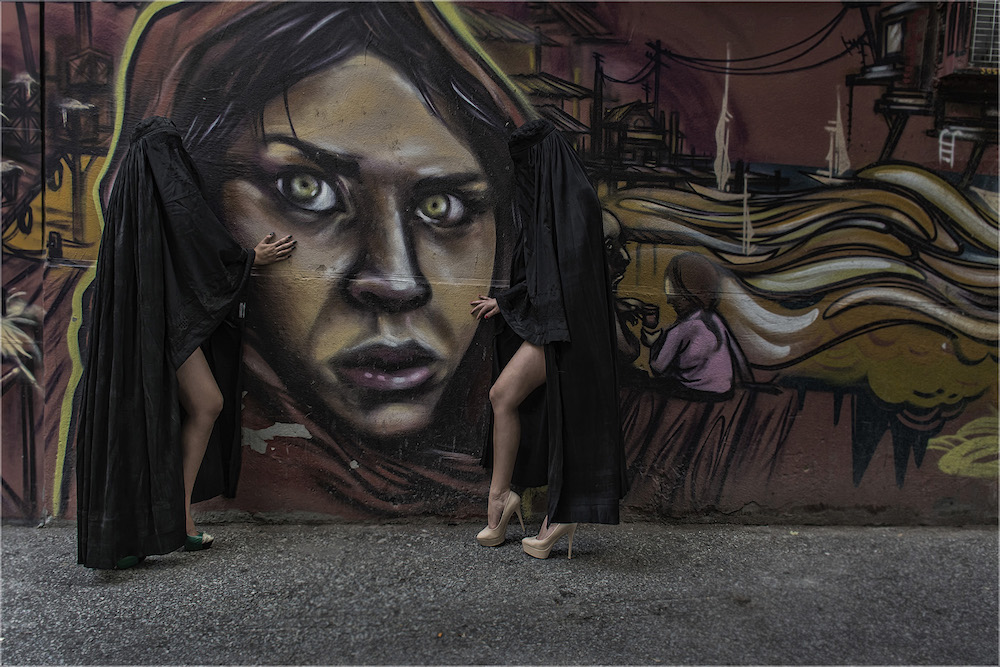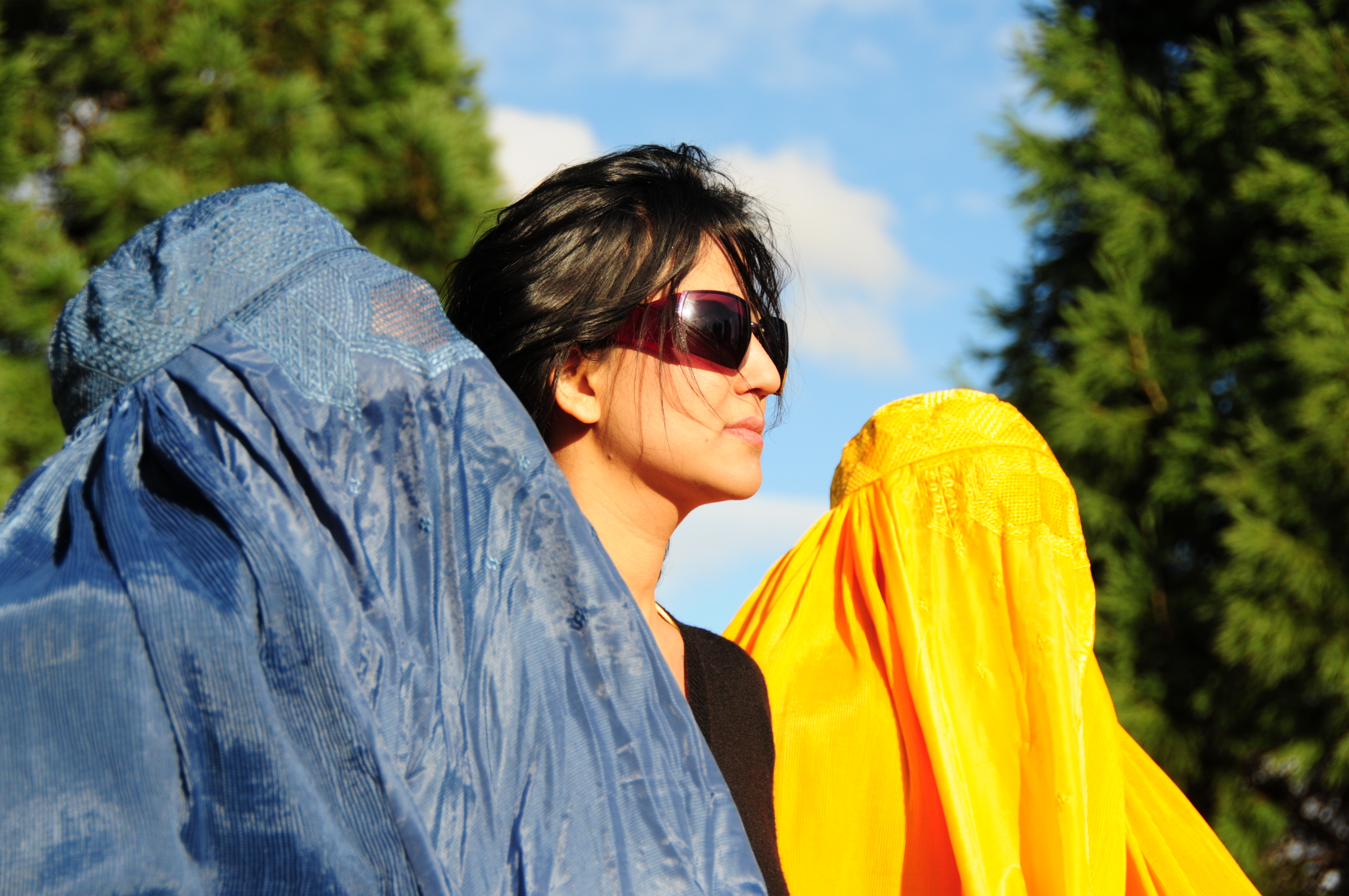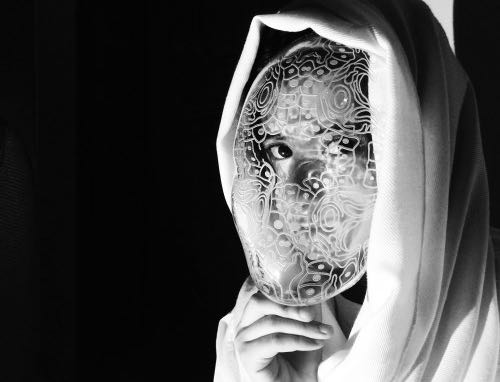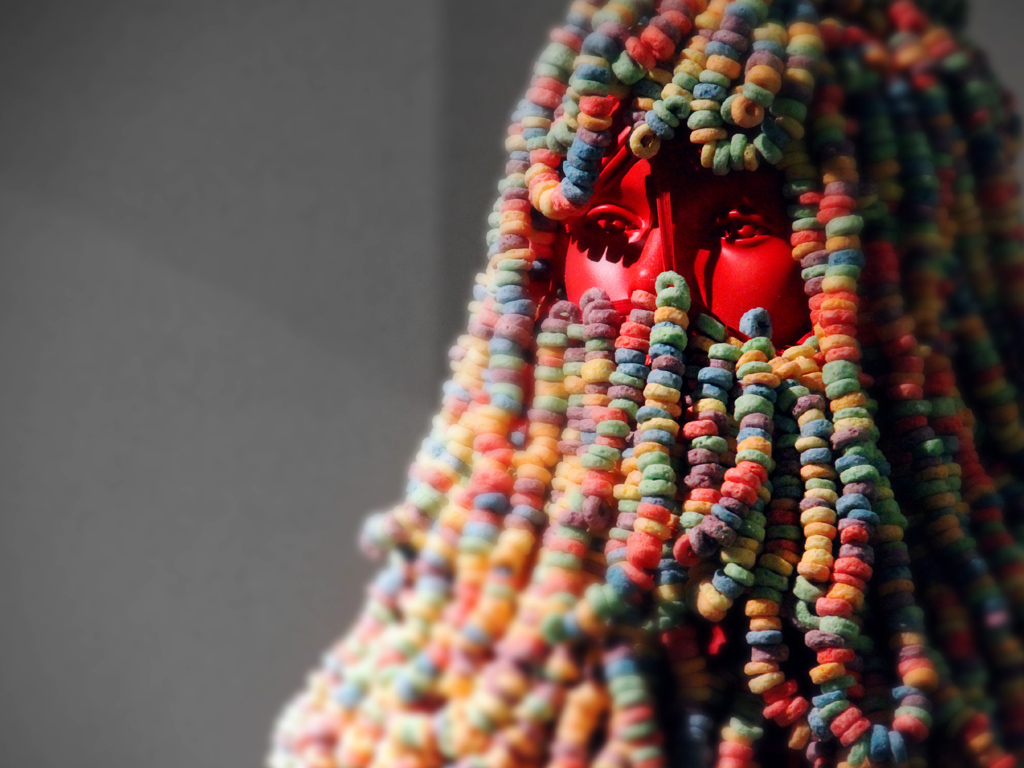THE BURQA ISSUE
Support OF NOTE’s work by ordering a Special Print Copy of The Burqa Issue.
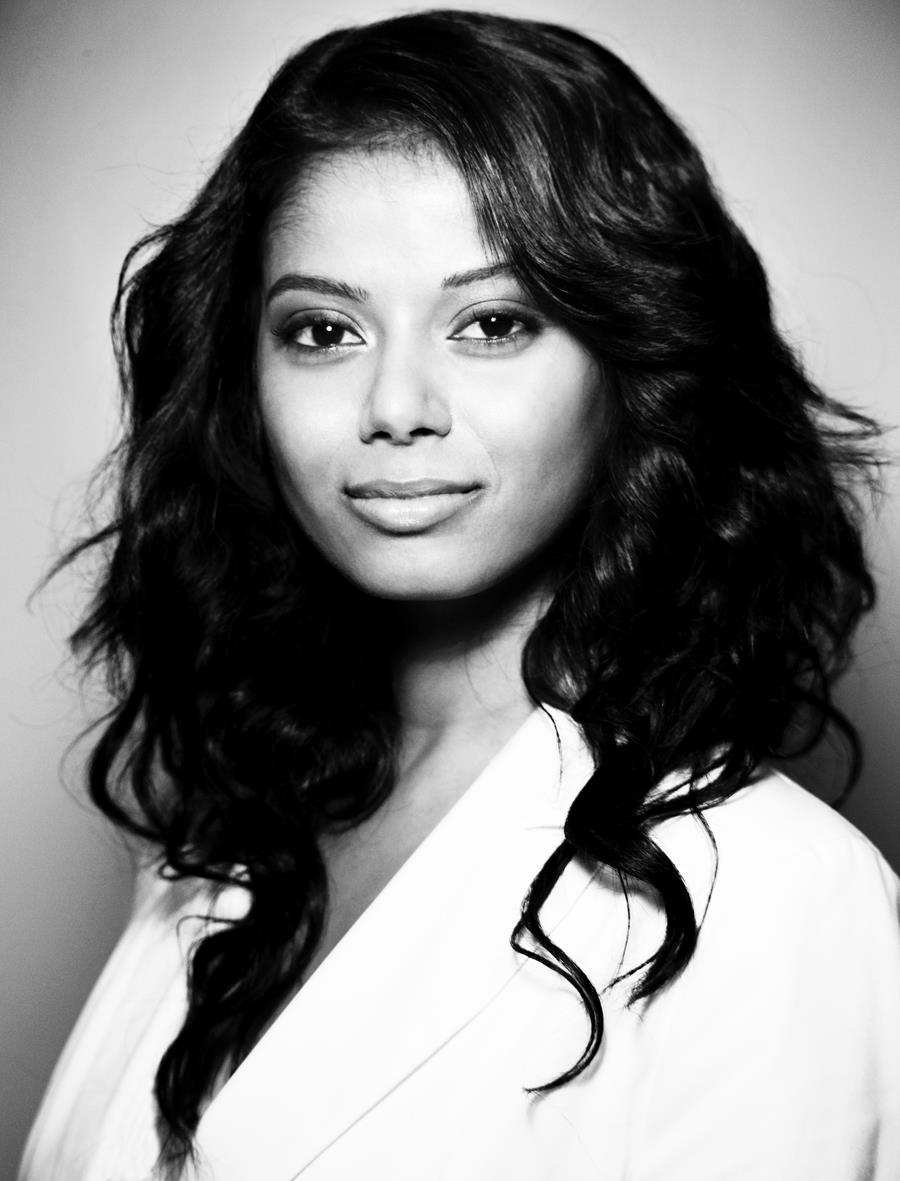
GRACE ANEIZA ALI
editor’s note: The Art of the Burqa
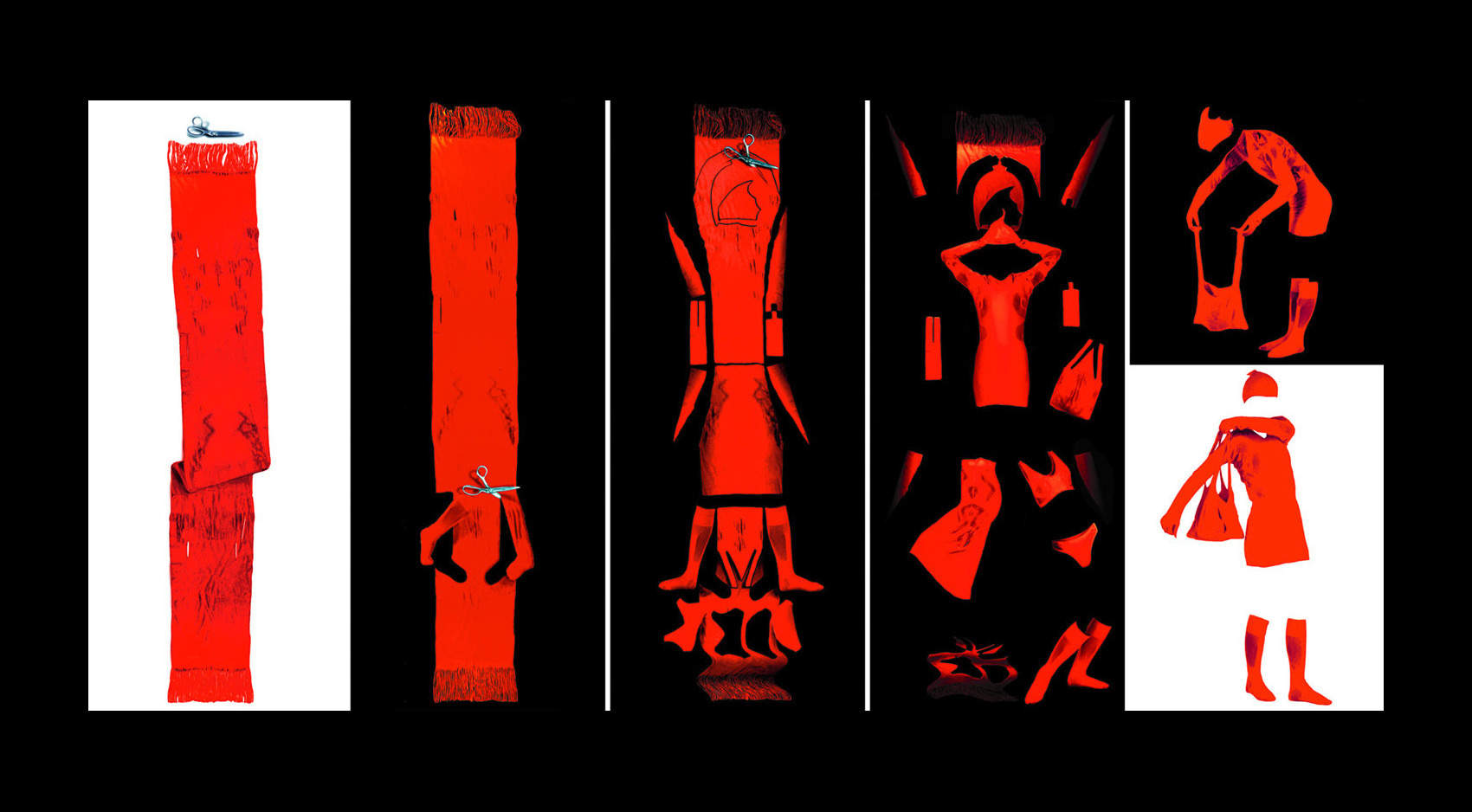
Is Fashion Modern? Salon and Abcdearium — MoMA

The Burqa: Tool of Oppression? — Women’s Voices of Change

Art of the burqa: exploring the many narratives of the woman under the veil — ivoh

On the Margin – The Art of Burqa — WPFW Pacifica 89.3 FM
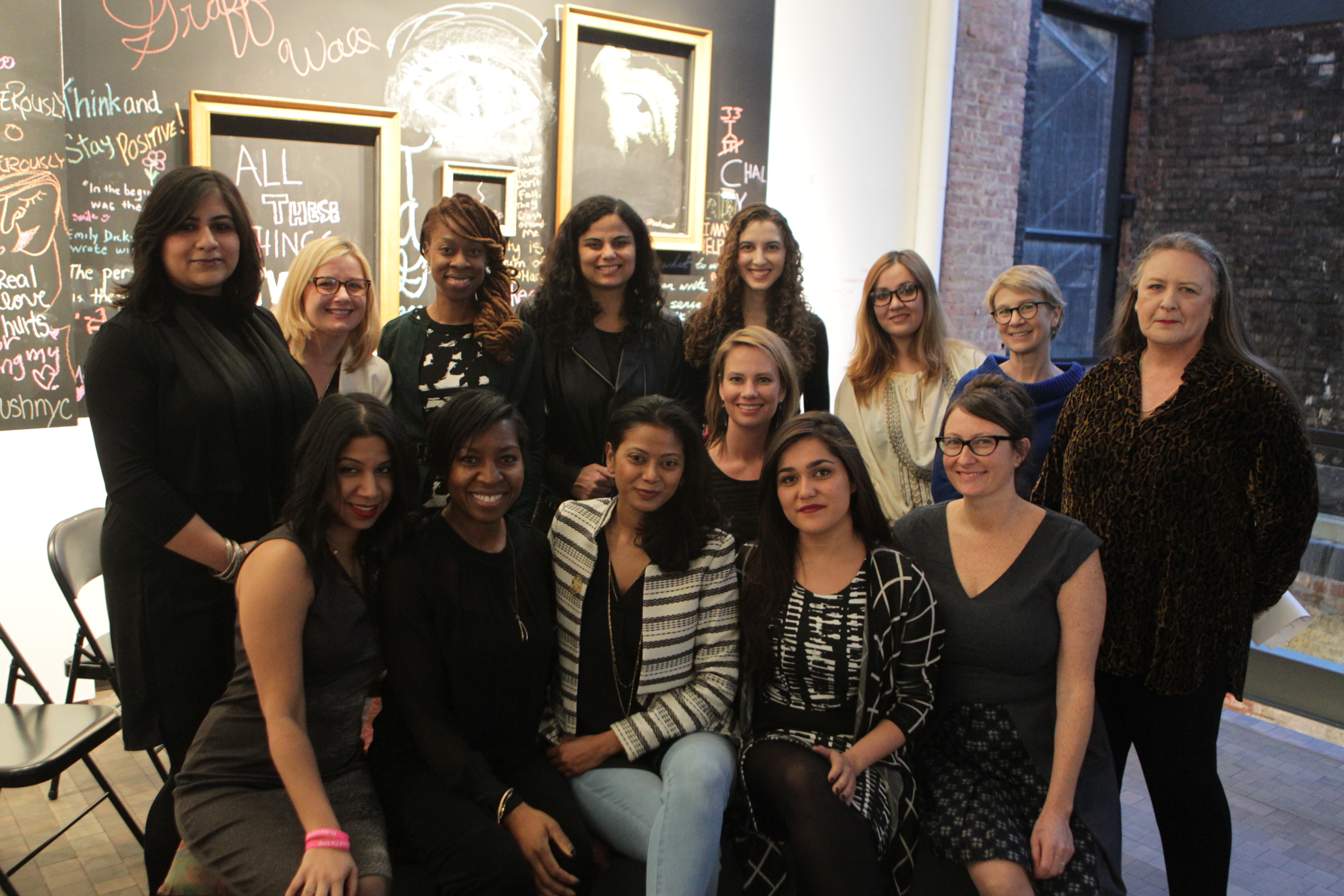
Art of Burqa event in NYC (March 6, 2016) — Flickr
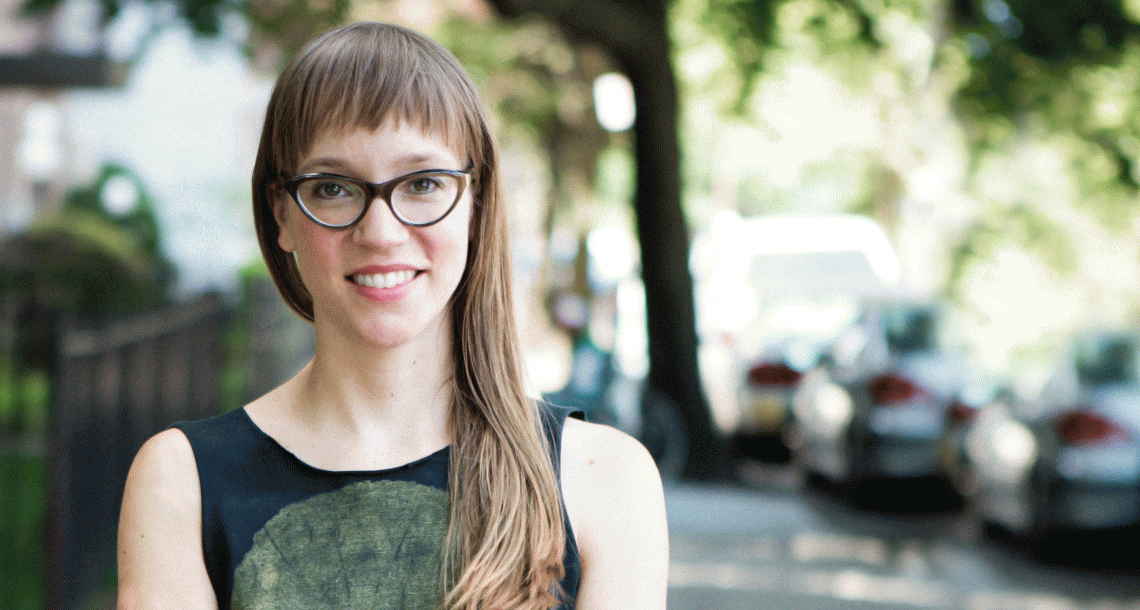
Behind Burqas, More than Bodies — April Greene
The burqa—an aesthetically stunning style of the veil, usually blue or black, with a mesh over the eyes—has evolved into the controversial and the divisive. No longer is it seen as a garment worn by some Muslim women to cover their bodies in public, a marker of religious identity, a desire to separate spiritual space from the outside world.
It is now symbol—of oppression, of religious freedom, of citizenship.
While many employ the burqa as fodder for debate, the Artists Of Note we’ve selected for The Burqa Issue use their creative voice and art practice to examine the complicated experiences of the women who actually wear the burqa—by choice or by force. These multi-disciplinary global artists employ the burqa, actual and symbolic, in their photography, documentary film, poetry, graffiti, street art, murals, sculpture and painting, to trouble our perceptions.
While their art questions, provokes, defends, indicts, or unapologetically takes a stance for or against the burqa, it is art that is first and foremost deeply personal, before it is political. Each of these women know intimately, and at times painfully, how the world encounters women donned in burqas because they have worn them or borne witness to stories of the women they love—their mothers, sisters, aunts, matriarchs and friends—who have.
It is this offering of their deeply personal and intimate art that allows us to probe the contradictory and counter the political:
How do we de-politicize the burqa? How does dress become so intertwined with religion? With citizenship? Is the binary that the burqa is either a tool of oppression or a symbol of religious freedom a failure? How are our debates and intellectualisms failing the very women who wear the garment?
Can we honor a woman’s desire for the sacred solace the burqa offers? Can we find value in a spiritual philosophy that a woman’s body is not for public consumption?
Although none of the artists take on the role of a spokesperson, here in this issue, women speak for women. The team behind The Burqa Issue are all women. They bring to bear roots from Afghanistan, Algeria, Canada, Guyana, India, Iran, Nigeria, Pakistan, Saudi Arabia, United Kingdom, and the United States to elevate the voices of the women who wear the burqa.
Many of the writers who collaborated with the artists to write their stories entered into these cross-continent conversations bravely—they either knew little about the politics that enshrouds the burqa, or they subscribed to the view of the burqa as symbolic of the physical and psychological oppression of women, or they believed that banning a woman from wearing a burqa is equally oppressive as forcing her to wear it. After our writers filed their stories, each of them had their stances disrupted—and beautifully so.
The Burqa Issue is not prescriptive. We offer no blueprint to our readers on what stance they should take, we only unveil how deeply complex the burqa is. As a means to understand the burqa in all its beauty, contradictions, and failures we turn to Art. Not because the art of the burqa grants us answers. But because, to echo the words of Princess Hijab, the Paris-based artist who employs the veil as a symbol in her street art: “I choose the veil because it does what art should do: It challenges, it frightens, and it re-imagines.”
Featured Articles
PAKISTAN | CANADA
Mariam Magsi: Imagining the Possibilities of a Hot Red Burqa
BY ERIN HANEY
With Mariam Magsi’s imagery, burqas reveal shades of the subversive bodies underneath. Her subjects are quietly outrageous, vivid and embracing, their genders and sexual identities undetermined. Her portraits, hiding so much desire, confound us. They might elicit sympathy, consternation, anger—they are meant to provoke.
.
.
.
AFGHANISTAN
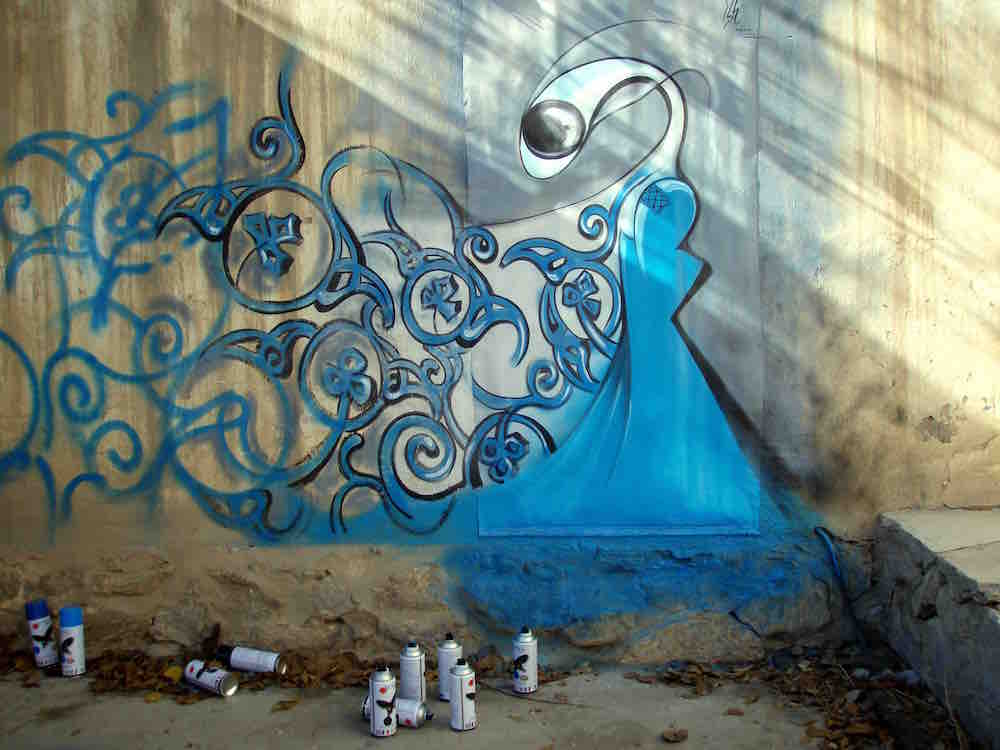 Shamsia Hassani: Beauty and the Burqa
Shamsia Hassani: Beauty and the Burqa
BY RAJUL PUNJABI
Shamsia Hassani’s message is provocative—she paints images of women in burqas in large public spaces when the burqa is known for preserving a woman’s privacy. There is an undeniable sense of boldness and exposure in the work. Her large scale paintings, rife with vibrant color and textures, reinforce the idea that a woman can maintain her privacy without being invisible. While her body is covered, it can still exist in a powerful way.
.
.
.
..
AFGHANISTAN | PAKISTAN
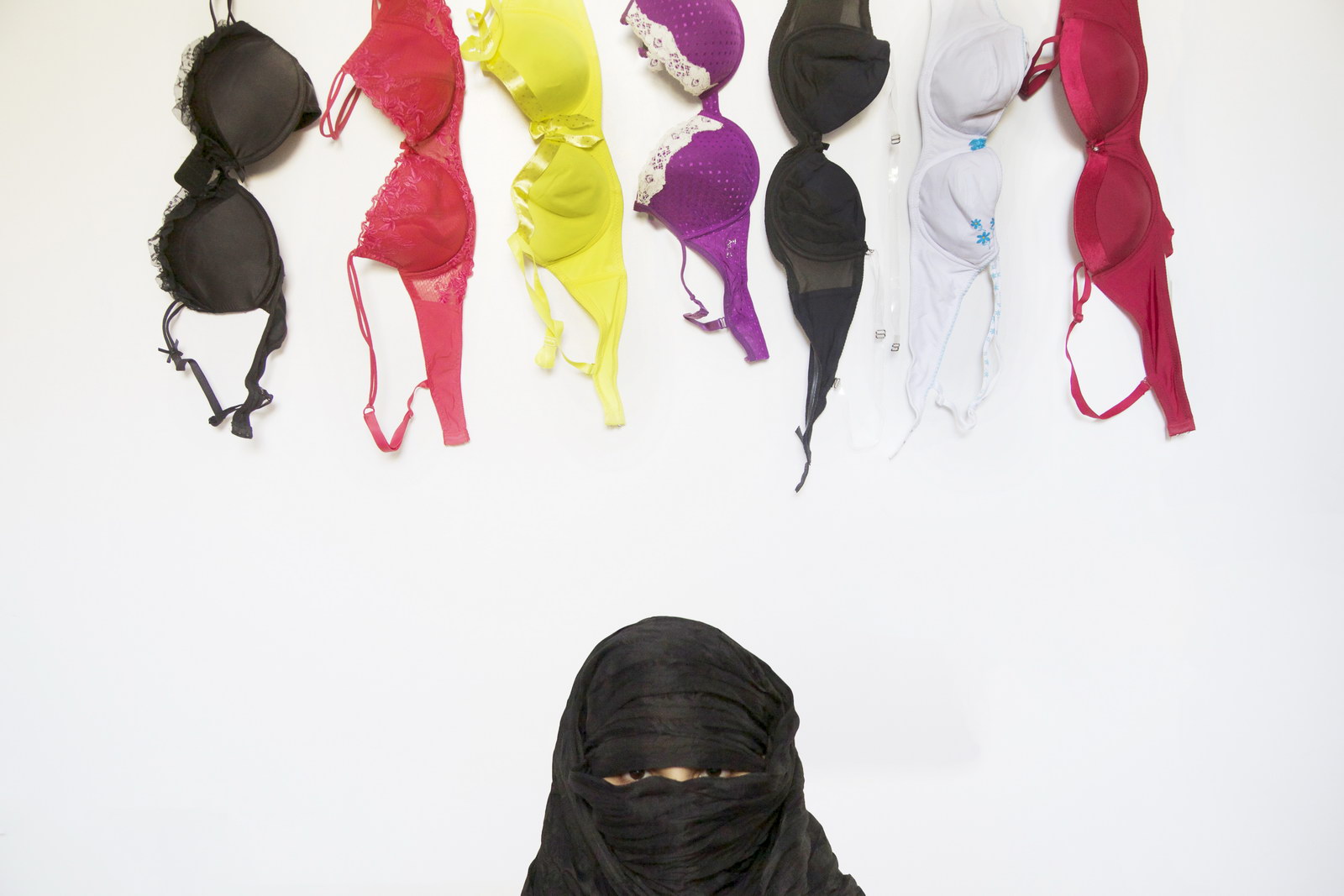 Rada Akbar: Making the Invisible Visible
Rada Akbar: Making the Invisible Visible
BY STEPHANIE SEGUINO
Rada Akbar’s images of women in burqas are at once powerful and disquieting. In The Veil, one of the few color images in this series, a headshot of a woman in a black niqab with brightly colored brassieres hanging above her head looks intently into the eyes of the viewer. We know her look is intent because there is no netting over the eyes, although it is difficult for the viewer to discern what the eyes reveal. But the composition of the image invokes a clear sense of the “caged” woman’s separation from what is vibrant, sensual, and colorful.
..
.
AFGHANISTAN | CANADA
Brishkay Ahmed: Unveiling the History of the Burqa
BY BUREEN RUFFIN
In her documentary film Story of Burqa: Case of a Confused Afghan, Brishkay Ahmed, an Afghan-Canadian filmmaker, takes on the enormous task of uncovering the story of how the burqa came to be associated with Afghanistan and its role in the lives of Afghan women and girls. She and her camera crew take the viewer on a journey through the alleyways and past the stalls of the Kabul markets, where burqas are made, sold, and worn.
.
..
SAUDI ARABIA | UNITED KINGDOM
Ahaad Al Amoudi: The Burqa as a Well-Worn Modern Mask
BY ZAYNAB ODUNSI
Ahaad Al Amoudi believes the Internet and the burqa share a critical connection. In her view, the Internet mirrors the same function of the burqa — one of anonymity, freedom, and the masking of the self. However, she says, “The anonymity that the Internet grants women is not subjected to the same prejudices for women who wear the burqa.”
.
AFGHANISTAN | UNITED STATES
Behnaz Babazadeh: The Bitter Sweetness of Reinventing Burqas
BY GIA HAREWOOD
Behnaz Babazadeh began taking pictures of herself in all kinds of burqas. Experimenting with everything from sugar cubes to cotton candy to Fruit Loops, she would literally change the image of the burqa by changing its substance. She found the most success with gummy bears and Fruit Roll-Ups. These remixed garments would eventually form her multi-media series, Burkaphilia. It is the very unique materials the artist employs that softens the viewer’s gaze and connects burqas to sensory associations of joy, sweetness, and innocence.
.
....
AFGHANISTAN | IRAN | UNITED STATES
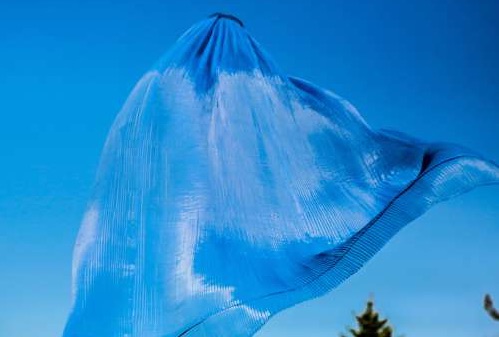 Mahnaz Rezaie: Artistic Rage and Wishful Responses to the Burqa
Mahnaz Rezaie: Artistic Rage and Wishful Responses to the Burqa
BY MAHNAZ REZAIE
The burqa itself is not an evil thing. It is its usage that shapes its meaning. Elements of the burqa can now be seen in Vogue’s runway fashion shows, and in music videos of American pop singers like Lady Gaga. Certainly, as an artifact, the burqa is inspiring many artists to play with the idea of it and to transform its meaning.
AFGHANISTAN
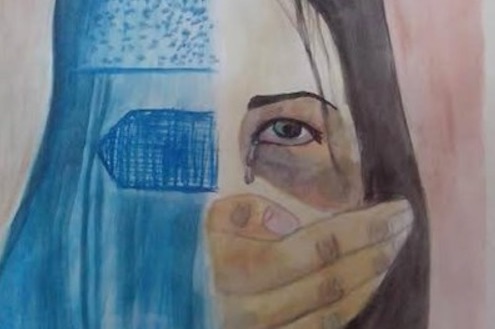 Afghan Women’s Writing Project: Voicing Narratives of Change
Afghan Women’s Writing Project: Voicing Narratives of Change
BY CELESTE HAMILTON DENNIS
The poems by Afghani writers Nahid W., Roya, and Norwan speak to the power of the pen. They are raw. They are brave. They are what happens when women bear witness to their own stories without inhibition, without judgment, and without fear. The three women write under pseudonyms as part of the Afghan Women’s Writing Project. Since its start in 2009, the all-volunteer run nonprofit has encouraged nearly 400 women from Afghanistan to emerge from beneath the burqa and tell their own truths.
AFGHANISTAN | CANADA
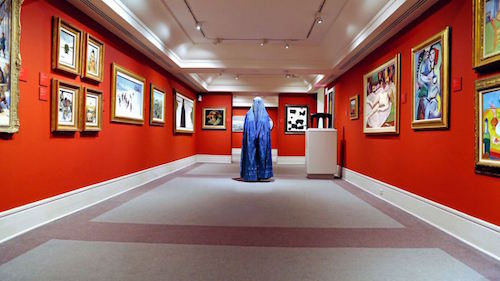 Hangama Amiri: Secrets and Desires
Hangama Amiri: Secrets and Desires
BY SUZANNE RUSSELL
Hangama Amiri uses the burqa as a symbol of invisibility in her paintings and video installations. Her mission is to tell the stories of the women of Afghanistan — starting with her mother. The women in her family inform her art practice, so too does her own relationship with the burqa and her childhood memories from Afghanistan.

